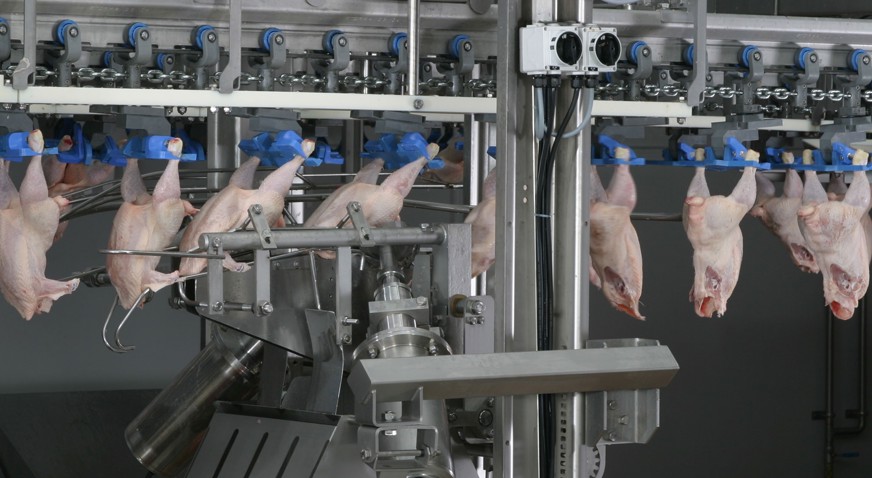Marel’s ACM-NT stands for automatic modular in-line cut-up, capable of handling up to 7,200 broilers per hour. The system will handle both air and water-chilled products. It is a solidly proven solution, as it is in successful everyday operation with processors around the world, from USA to China and from Australia to Poland.
Labor issues
Cut-up and deboning departments need a large amount of skilled staff if they are not automated. Marel offers plenty of options for turning these processes into in-line automatic operations without losing yield or compromising product quality or presentation. Marel’s ACM-NT cut-up system is an excellent solution for cutting all required products. Thanks to its modular configuration using wing, leg and breast cutting modules, the system performs skilled cuts, which could be done only manually before.
Automating the cut-up department doesn’t mean that labor will disappear from the processing plant altogether. Job functions are, however, shifting away from real physical contact with meat and from heavy labor towards supervising and checking. Furthermore, equipment will always need proper maintenance and service. Manpower will be needed on a daily basis to keep all machines running at optimum efficiency.







